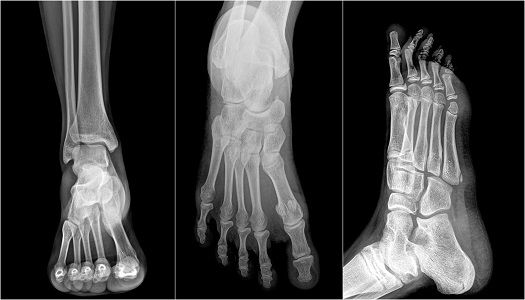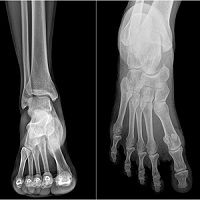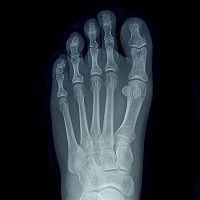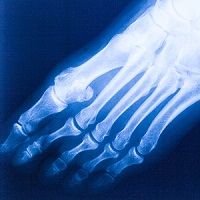Article
Six Common Foot and Ankle Injuries Physicians Can Easily Misdiagnose
Author(s):
A foot or ankle injury misdiagnosis can lead to chronic pain or arthritis.

Although some foot and ankle injuries are not serious, physicians are often advised to recommend additional tests to make the proper diagnosis. A new study found just how damaging a misdiagnosis of a lower extremity injury can be to a patient’s health.
“As an osteopathic physician, I view treatment of foot and ankle injuries as acute and preventive care because mismanaged injury leads to so many future problems for patients,” lead author, Jessica Reissig, DO, of the Department of Orthopedics at Plainview Hospital in New York, said in a news release.
Common foot and ankle injuries account for more than three million emergency room visits every year in the United States, according to the American Osteopathic Association (AOA). Many of these injuries are among the six examined in the study: lateral talar process fractures, os trigonum injuries, Lisfranc injuries, turf toe, navicular stress fractures, and syndesmotic injuries.
“These types of trauma are a clinically significant source of morbidity and long-term disability among patients, not just those who are elite athletes,” Reissig continued.
The quicker that patients receive the correct foot or ankle injury diagnosis, the quicker physicians can implement the proper treatment. However, prolonging the process can escalate, leading to chronic pain, arthritis, and disability—ultimately, worsening patients’ quality of life.
Researchers analyzed these six injuries, which often occur in athletes, and how they can be confused with other injuries.

Known as snowboarder’s fracture, lateral talar process fractures can be difficult to detect using plain radiographs. Physicians may misdiagnose the lateral ankle pain and swelling as a severe ankle sprain. But if the injury is actually a lateral talar process fracture, leaving it untreated can lead to subtalar osteoarthritis, the authors said. This can develop into severe pain and disability over time.

Around 5% to 10% of the global population have the accessory bone, os trigonum, in the posterolateral aspect of the talus. An injury to this bone could cause various problems, including: avulsion injury of the posterior talofibular ligament, Stieda process or os trigonum fracture, or cartilaginous synchondrosis disruption. The study authors explained that physicians may initially diagnosis these problems as Achilles tendon and flexor hallucis longus injuries. However, a wrong diagnosis could progress the condition to peroneal tendinitis, recurrent ankle sprains, and sinus tarsi syndrome, especially in athletes.

When an injury occurs in the Lisfranc joint, known as the tarsometatarsal complex, it could potentially impact multiple bones in the foot. One reason for misdiagnosis is due to the fact that around one-third of the injuries are subtle, which can prolong injury. But a misdiagnosis can eventually lead to chronic pain and arthritis. The team advised that physicians be suspicious of these types of injuries in order to avoid long-term problems.

A sprained ligament around the big toe, called turf toe, typically happens with a combination of “hyperdorsiflexion force and axial load on the metatarsophalangeal joint with the foot fixed in equinus,” according to the study published in The Journal of the American Osteopathic Association. If not managed properly, patients can experience persistent pain, stiffness, deformity, and even joint arthritis.

The researchers highlighted that doctors need to have a high index of suspicion of navicular stress fractures. Symptoms of the injuries are nonspecific, so the foot pain could be misdiagnosed and mistreated which could later develop into chronic pain and disability.

The final of the six injuries discussed in the journal, syndesmotic injuries, can be high ankle sprains, but more commonly involve tibia or fibula fractures. These injuries may require surgical intervention, so a misdiagnosis can prolong ankle dysfunction. “Physicians must distinguish syndesmotic injury from classic inversion ankle sprains caused by ankle instability due to long-term morbidity associated with improperly treated syndesmotic injuries,” the authors wrote.
The study, “Common Foot and Ankle Injuries: What Not to Miss and How Best to Manage,” was published in The Journal of the American Osteopathic Association. The news release was provided by the AOA.
Related Coverage:
Stop Blaming Weather for Body Pain




